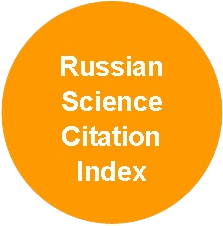Hydromelioration in Forestry: History of Research
DOI:
https://doi.org/10.37482/0536-1036-2022-3-103-118Keywords:
hydromelioration, swamp, drainage efficiency, stationary studies, quality class, basic stand density, LisinoAbstract
Wetlands cover more than 220 mln ha of Russia’s forests. Swamps alone represent more than 100 mln of them. There are low-quality and low-yield stands on waterlogged areas. Much of such land is treeless. Many years of hydromelioration have shown the possibility of growing here high-quality stands of natural or artificial origin. The Lisino training and experimental forest serves as an example. Earlier in Lisino out of 28 ths ha normal stands covered 25–30% of the area; swamps – more than 30 %, a significant part of them was treeless. Currently, after hydromeliation, swamps represent slightly more than 4 % of the territory. There are significant, but largely ad hoc, studies of drainage efficiency in forestry practice. This article considers multi-year studies carried out simultaneously in stands of different composition and age, which allowed defining the features that determine the silvicultural effect of drainage. The forestry efficiency of drainage largely depends on the drainage rate – the degree of lowering of the groundwater level by drainage channels. After hydromelioration, there is always an increase in stand growth, however, the efficiency of drainage and the volume of stand growth is determined by the abundance of peat, the type of swamp, which is predictable by the ash content of peat. Multi-year studies on stationary lands have shown that it is possible to grow stands of the I quality class with a stock of up to 500–600 m3/ha on abundant eutrophic swamps. It was found that the drainage efficiency also depends on the stand initial composition. In relatively single-age stands, which are rich in composition, growth is also higher; in mixed-age stands, old trees may fall off and, therefore, growth is likely to decrease temporarily. Studies have shown that in mixed stands the efficiency of drainage is increased by regulating the stand composition by improvement thinning.
Downloads
References
Алексеев А.С., Бабиков Б.В., Соловьев В.А., Шурыгин С.Г. Влияние лесоосушения на прирост древостоев // Изв. СПбЛТА . 2007. № 179. С. 4–14. Alekseev A.S., Babikov B.V., Solovjev V.A., Shurjigin S.G. The Influence of Forest Bogs Drainage on Scots Pine Tree Stands Growth. Izvestia Sankt-Peterburgskoj lesotehniceskoj akademii, 2007, no. 179, pp. 4–14. (In Russ.).
Бабиков Б.В. Водный режим почв осушенных лесных болот // Почвоведение. 1980. № 2. С. 80–85. Babikov B.V. Water Regime of Soils of Drained Forest Swamps. Pochvovedenie, 1980, no. 2, pp. 80–85. (In Russ.).
Бабиков Б.В., Шурыгин С.Г. Почвенно-гидрологические исследования в Лисинском учебно-опытном лесхозе. СПб.: СПбГЛТА , 2006. 60 с. Babikov B.V., Shurygin S.G. Soil and Hydrological Research in the Lisino Training and Experimental Forest. Saint Petersburg, SPbSFTU Publ., 2006. 60 p. (In Russ.).
Бабиков Б.В., Косарев В.П., Тимофеев А.И. Рост сосновых насаждений на осушенном болоте почвенно-гидромелиративного стационара Малиновский // Изв. СПбЛТА . 1996. № 3. С. 46–54. Babikov B.V., Kosarev V.P., Timofeev A.I. Growth of Pine Plantations in the Drained Swamp of the Malinovskiy Soil-Hydromelioration Station. Izvestia Sankt-Peterburgskoj lesotehniceskoj akademii, 1996, no. 3, pp. 46–54. (In Russ.).
Вомперский С.Э., Иванов А.И. Влияние гидромелиорации на осадку торфа и выделение CO2 // Гидролесомелиорация и ведение лесного хозяйства на осушенных землях. СПб., 1993. С. 57–60. Vomperskiy S.E., Ivanov A.I. Effect of Hydromeliation on Peat Sedimentation and CO2 Release. Forest Hydromelioration and Forest Management on Drained Lands. Saint Petersburg, 1993, pp. 57–60. (In Russ.).
Егоров А.А., Титов Ю.В. Флора Лисинского учебного опытного лесхоза. СПб.: ЛТА , 1997. 93 с. Egorov A.A., Titov Yu.V. Flora of the Lisino Training and Experimental Forest. Saint Petersburg, LTA Publ., 1997. 93 p. (In Russ.).
Кощеев А.Л. Заболачивание вырубок и меры борьбы с ним. М.: АН СССР , 1955. 167 с. Koshcheyev A.L. Waterlogging of Clearcuts and Control Measures. Moscow, AN SSSR Publ., 1955. (In Russ.).
Кравчинский Д.М. Лисинская казенная лесная дача. СПб., 1911. 24 с. Kravchinskiy D.M. Lisino State Forest Dacha. Saint Petersburg, 1911. 24 p. (In Russ.).
Маслов Б.С., Константинов В.К., Бабиков Б.В., Ахти Э. Мелиоративно-болотные стационары России. Вантаа: Н ауч. центр Вантаа METLA, 2006. 397 с. Maslov B.S., Konstantinov V.K., Babikov B.V., Akhti E. Meliorative and Wetland Stations of Russia. Vantaa, METLA Publ., 2006. 397 p. (In Russ.).
Орлов П. Осушительные работы в Лисинском учебном леспромхозе // Природа и хозяйство учебных леспромхозов Лесотехнической академии. Л., 1931. С. 207–211. Orlov P. Drainage Works at the Lisino Training Lespromkhoz. Nature and Economy of Educational Lespromkhpzes of the Forest Engineering Academy. Leningrad, 1931, pp. 207–211. (In Russ.).
Пахучий В.В. Водный режим в хвойных древостоях на староосушенных торфяниках. Л.: Наука, 1985. 72 с. Pakhuchiy V.V. Water Regime in Coniferous Stands on Old-Drained Peatlands. Leningrad, Nauka Publ., 1985. 72 p. (In Russ.).
Преображенский А.В. Вековой опыт ведения лесного хозяйства в Лисинском и Охтинском лесхозах. М.-Л.: Гослесбумиздат, 1953. 116 с. Preobrazhenskiy A.V. A Century of Forest Management Experience in the Lisino and Okhta State Forestries. Moscow, Goslesbumizdat Publ., 1953. 116 p. (In Russ.).
Проект отводнения первого хозяйственного отделения Лисинской дачи // Изв. вузов. Лесн. журн. 1847. № 6. Draft of the Water Drainage of the First Household Department of the Lisino Dacha. Lesnoy Zhurnal = Russian Forestry Journal, 1847, no. 6. (In Russ.).
Тимофеев А.И., Савицкая С.Н. Почвы Лисинского лесхоза. СПб.: СПбПУ, 2011. 126 с. Timofeev A.I., Savitskaya S.N. The Soil of the Lisino Forestry. Saint Petersburg, SPbSTU Publ., 2011. 126 p. (In Russ.).
Шиндин П.М. Влияние осушительной мелиорации на рост сосны в Суланде: диплом. работа. 1935. 98 с. Shindin P.M. Effect of Drainage Reclamation on Pine Growth in Sulanda. Thesis. 1935. 98 p. (In Russ.).
Шишков И.И., Докудовский И.Е. Типы леса Лисинского учебно-опытного лесхоза и их хозяйственное использование. М.: Гослесбумиздат, 1963. 111 с. Shishkov I.I., Dokudovskiy E.E. Types of Forest of the Lisino Training and Experimental Forest and Their Use. Moscow, Goslesbumizdat Publ., 1963. 111 p. (In Russ.).
Heikuzainon L. The Influence of Forest Drainage on Growth and Removal in Finland. Acta Forestalia Fenica, 1961, vol. 71, no. 8. 74 p. (In Fin.).
Huikari O., Paarlahti K., Paavilainen E., Ravela H. On the Effect of Stripwidth and Ditch Depth on the Water Economy and Runoff on Peat Soil. Communicationes Instituti Forestalis Fenniae, 1966, vol. 61(8). 39 p. (In Fin.).
Seuna P. Influence of Forestry Draining on Runoff and Sediment Discharge in the Ylijoki Basin, North Finland. Aqua Fennica, 1982, no. 12, pp. 3–16. (In Fin.).
Zalitis P. Meskopilas piteksnasa – cisumi. Riga, 2006. 218 p. (In Latv.).
Downloads
Published
How to Cite
Issue
Section
License
Copyright (c) 2022 Б.В. Бабиков, М.Б. Субота (Автор)

This work is licensed under a Creative Commons Attribution 4.0 International License.












